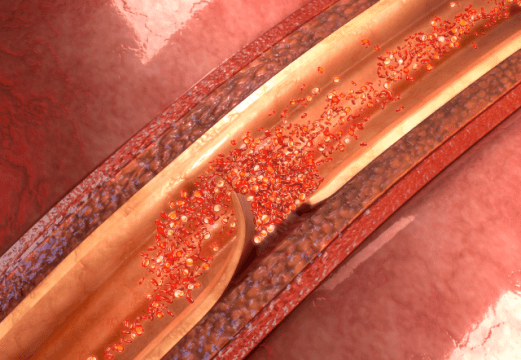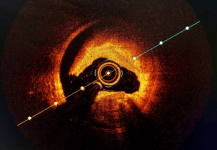The prevalence of spontaneous coronary artery dissection (SCAD) is around 4% of acute coronary syndromes (ACS). Even though the current guidelines recommend a conservative approach, as long as it is clinically viable, it remain unclear whether there are benefits to percutaneous coronary intervention (PCI) as an initial approach, to prevent disease progression and adverse events.…
Stent Thrombosis: Clinical Characteristics and Event Predictors in a Contemporary Cohort
Stent thrombosis (ST) is a serious complication of coronary PCI. However, its incidence across registries is low. It has been classified according to onset into acute (less than 24 hrs.), subacute (between 24 and 30 days), late (between 30 and 365 days) and very late (later than 365 days). The estimated incidence of ST is…
Early invasive Strategy for Non-ST Elevation ACS in Chronic Kidney Disease
Many randomized studies and systematic revisions have shown that an early invasive approach (within 24hrs. after diagnosis) will not reduce mortality across the non-ST elevation acute coronary syndrome (NST-ACS) population, hence the relevance of NST-ACS; patients with a GRACE score higher than 140 were the ones showing improved outcomes. Roughly 40% of NST-ACS patients have…
Spontaneous Coronary Artery Dissection: Treatment and Prognosis
Spontaneous coronary artery dissection (SCAD) is a non-traumatic nor iatrogenic event that causes a separation of the coronary artery tissue due to an intimal tear or a mural spontaneous hemorrhage. This event is most frequent in young females and usually causes an acute myocardial infarction that could be major. It accounts for 1% to 4%…
Same Day Discharge in NSTE-ACS: Is It Possible?
At present, percutaneous coronary intervention (PCI) is the most common coronary revascularization strategy. One of its benefits is that patients can be safely discharged when procedures are programed, which helps decompress hospital capacity. However, this strategy has not been validated for acute coronary syndromes; the evidence gathered for non-ST elevation ACS is far from robust,…
Two Safe Stents at Two Years in High Bleeding Risk
There is a consistent number of patients presenting high risk of bleeding. In this context, receiving dual antiplatelet therapy (DAPT) for 12 months would not be advisable. Even though the European and American guidelines recommend 1 to 6 months for chronic and acute syndromes in this group, these are often complex PCI cases, which makes…
ACC 2022 – Complete Trial QoL: Complete Revascularization in STEMI
The COMPLETE study has shown complete revascularization in STEMI reduces cardiovascular mortality or new AMI, which generated a change in ACC/AHA 2021 revascularization guidelines. However, its impact on quality of life is yet to be studied. The aim of this prespecified analysis of the COMPLETE study is to determine whether complete revascularization improves quality of…
STEMI: Can We Omit Stenting?
The recommended treatment for ST elevation acute myocardial infarction (STEMI) is early PCI, typically stenting. However, stent implantation always involves the risk of intravascular complications, such as stent thrombosis or restenosis. Sometimes stable flow is restored to the target vessel after initial PCI and we can omit stenting when there is no angiographically significant residual…
Abbreviated DAPT in ACS: The End of Clopidogrel Monotherapy?
Compared with patients with chronic coronary syndromes, patients with acute coronary syndromes (ACS) are more likely to suffer from long term major adverse cardiac events (MACE). To prevent this, both the American and the European guidelines recommend prolonging dual antiplatelet therapy (DAPT) in this population for at least 12 months. However, in patients with certain clinical…
Zwolle Score: Can a Risk Score Decide Where STEACS Patients Should Stay?
The mortality of ST-segment elevation acute coronary syndromes (STEACS) has decreased thanks to improved reperfusion times (fibrinolysis or primary angioplasty), so that, in daily practice, there is a greater number of patients with stable acute myocardial infarction (AMI). This clinical stability and a low rate of complications raise the question of whether performing triage is…
- 1
- 2









